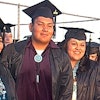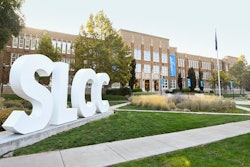The governance structure of most American Indian tribes was designed by the U.S. Department of the Interior in the 1930s, and tribes and experts say the systems disadvantaged tribal nations more than they helped.
“These governments were not very sophisticated and were often unwieldy, with no provisions for court systems. These systems usually hampered efforts to get things done,” says Dr. Stephen Cornell, faculty chairman of the University of Arizona’s Native Nations Institute for Leadership, Management and Policy.
The old governments also carry a legacy of colonialism that creates distrust in leadership and fosters economic dependence, Cornell says. As one tribal leader told Cornell, “We’re trying to replace the victim attitude with the victor attitude.”
“If someone in Washington, D.C., is making your decisions for you, you aren’t likely to go very far,” Cornell says. “Tribal nation building must be done by Indian people.”
NNI’s new online education course seeks to help tribal leaders do just that. The Institute has created an eight-course series entitled “Rebuilding Native Nations: Strategies for Governance and Development” and designed to strengthen and improve the operations of American and Canadian Indian nations.
“The rebuilding course gets successful ideas and practical experience from tribal leaders and communities into the hands of more people,” says NNI consultant Patricia Ninham Heft, business committee secretary of the Oneida tribe of Wisconsin.
Smaller tribes in particular, she notes, don’t have the funding to send people away to conferences or workshops. “Presenting information in distance learning and electronic formats gives greater access to more people,” she says.
NNI also is in the process of partnering with several tribal colleges that they hope will use the course materials to complement existing curriculum or offer the courses as stand-alone classes.
Ian Record, NNI’s manager of educational resources, says tribal colleges’ existing infrastructures and missions of community engagement make them natural partners for the Institute.
“‘Rebuilding Native Nations’ responds to a groundswell of support for re-creating tribal governments in Indian Country,” he says. “We found a real desire, not just among elected tribal leaders, but among citizens to be involved in rebuilding their governments.”
Dr. Manley A. Begay Jr., a member of the Navajo tribe and an NNI faculty chairman, identifies the 1975 passage of the Indian Self-Determination Act as the beginning of the tribal government rebuilding effort. He says researchers at UA and its sister organization, the Harvard Project on American Indian Economic Development, became interested in why some tribes were more successful than others.
“We began gathering a lot of stories in the field, identifying critical elements that led to success,” he says. They found that political sovereignty played a major role in building capable governments. They also discovered that tribes with the greatest economic stability kept politics out of management of tribal enterprises.
The NNI course includes nine learning modules presenting information in the form of video lectures by course instructors and perspectives of more than 100 Indian leaders and scholars, including Frank Ettawageshik of the Little Traverse Bay Band of Odawa Indians; David Gipp of the Standing Rock Sioux Tribe and the president of United Tribes Technical College in North Dakota; and the late Wilma Mankiller (1945-2010) of the Cherokee Nation of Oklahoma, who was the first female to be elected Principal Chief.
The first course module, “Introduction to Native Nation Building,” which surveys nation-rebuilding efforts of native nations today, is available now online for $125. The entire series can be purchased for $600.
The eight other modules — Economic Development, Constitutions, Justice Systems, Administration, Intergovernmental Relations, Leadership and Rebuilding Native Nations — will be available in the spring and summer of 2011. Because broadband access is limited in Indian Country — just 10 percent of Indians living on tribal lands have access, compared to 65 percent of the country at large, according to the Federal Communications Commission — NNI is making the course available via CD-ROM.





















